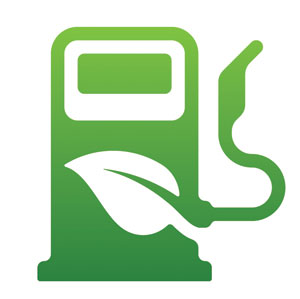BY JASON MOSLER
As part of a universal movement toward a greener tomorrow, the jump to alternative fuels dominates dinner table conversations in households across the country. We constantly hear about hybrids and electric vehicles as clean air options, yet a new trend has emerged—biodiesel fuel. Biodiesel is a fuel composed of vegetable oil, soybean oil or other waste products. Blends are becoming more readily available, but some consumers remain skeptical because of common myths that give this fuel source a stigma. Some of those myths include:
 Myth: Biodiesel uses food to create fuel
Myth: Biodiesel uses food to create fuel
Fact: Actually, it’s the waste from food or cooking that provides the means to make biofuel (e.g. vegetable oil from the bottom of the french fry pan). It can also be made from recycled plant and animal waste.
Myth: Using biodiesel is equivalent to pouring fryer grease into your car’s fuel tank
Fact:
Fryer grease can be used in the production of biofuel, but it cannot function as biofuel by itself.
Myth: Biodiesel is much less powerful than regular fuel
Fact: Regular fuel provides approximately 142,000 BTUs (a measurement of heat energy), whereas biofuel provides about 139,000 BTUs. This means that some people may notice a slightly less powerful acceleration performance, but the difference from petroleum diesel is insignificant.
Myth: You must change your fuel system in order to use biodiesel
Fact: Biofuel blends currently on the market are suitable for any diesel motor without any modifications.
Myth: The cost of biodiesel is more than petroleum diesel
Fact: Initially biodiesel can be slightly more expensive; however, that will change once biofuel production can keep up with demand. Essentially, the more biofuel is produced, the cheaper it will become. We have the capacity to control the cost of biodiesel through supply and demand because we can actually grow our own fuel as a nation.
Biodiesel is available today at many pumps throughout the U.S. in the form of a blend, because no engine’s fuel system is yet equipped to handle pure biodiesel. Looking ahead, biodiesel blends have the potential to serve as a replacement for petroleum diesel. Anything that can run on diesel fuel—ships, trains, boats, trucks, and generators included—can also run on biofuel, which can have a huge effect on how our country runs in the future. Schools like Universal Technical Institute, which has a campus in Avondale, Arizona, are already training automotive technicians to repair engines that use biofuels. In addition, biofuels help to boost the U.S. economy and significantly reduce tailpipe emissions containing sulfur, which contribute to global warming.
The future of biodiesel depends how the public embraces it. If our nation can accept biofuel as an alternative to petroleum diesel, then the future is very bright…not to mention sustainable. The world doesn’t have to choose between clean air and motor vehicles—it is possible to have both.






We really have to look at how much biomass is currently being wasted. How much of this biomass ends up either in compost piles, or in landfills? This is all potentially useful in biodiesel production. Currently the main biomasses being used to produce biodiesel are things like corn, soy beans, and algae. Algae is a very sustainable crop, in that it grows very quickly, with little effort, and creates a biomass that lends itself very easily to the production of the oil used for biodiesel production. It is also not a crop that competes as a food source. We should also look at what crops are currently being grown in fields, as well as the utilization of the fields. They could well be crops that could be grown in those fields during off seasons that could also be used, while not displacing food sources.
Your myth #1 seems contrary to your conclusion. Although current bio-diesel fuel may be waste, it could only replace a tiny portion of our petroleuam use. Once we begin growing the fuel it would displace other crops currently used as food.